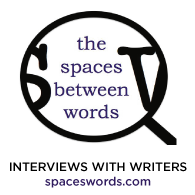Home and away
By Rhoda Bharath
Caribbean Literature After Independence:
The Case of Earl Lovelace, ed. Bill Schwartz
Institute for the Study of the Americas, ISBN 978-190-003-9918, 195 pp
A Place in the World: Essays and Tributes in Honour
of Earl Lovelace at 70, ed. Funso Aiyejina
Lexicon Trinidad, ISBN 978-976-631-050-9, 201 pp
Unless the name is Derek or Vidia, there aren’t many Caribbean authors likely to have two books of criticism published about them in the same year. In 2005, the University of the West Indies St Augustine campus celebrated Earl Lovelace’s landmark seventieth birthday with a conference and related celebrations. Three years later, conference chief-cook-and-bottle-washer Funso Aiyejina published a slick illustrated version of the conference proceedings. Just months before, Bill Schwarz, a lecturer at Queen Mary, University of London, also edited a collection of essays on Lovelace, funded by the University of London’s Institute for the Study of the Americas.
Schwarz announces very early that “the distance between writer and critic is hazardous at the best of times,” and a comparison of his Caribbean Literature After Independence and Aiyejina’s A Place in the World certainly establishes this. The former is an academic tome offering a view that is for the most part non-Caribbean and North Atlantic in perspective, with contributions from the likes of Chris Campbell, Louis James, James Proctor, and John Thieme. With the exception of Lawrence Scott, who has memoirs of Lovelace in both books, the contributors are all researchers with a background in some form of postcolonial studies, but not necessarily a firm background in Lovelace’s work and the Caribbean landscape.
Aiyejina’s book functions as both an academic interrogation of Lovelace’s life’s work and a pictorial biography. Memoirs by Greg Rigbsy and Lawrence Scott give us a deft portrait of the artist in work and life, and Lynda Quamina-Aiyejina has provided an exhaustive bibliography that is a researcher’s dream. Academics and friends commingle within its pages, and every so often there are photographs marking some event in Lovelace’s life. There is a sense in which the contents of this book seem more familiar with Lovelace. There are essays from the likes of Gordon Rohlehr, Louis Regis, Merle Hodge, Sandra Pouchet-Paquet, and Jennifer Rahim: all intellectuals in their respective fields, but also friends and acquaintances of the man in question.
We can be skeptical of both books for two reasons: one seems almost too familiar with its subject, while the other is not familiar enough. In this regard, each book is a foil for the other. Both will be useful to new and seasoned readers of Lovelace’s work. Obviously there are many areas in which they overlap, but there are also places where they diverge, and at least one path both have chosen not to pursue.
•
Aiyejina and Schwarz both focus on the importance of Lovelace’s choice to remain in the Caribbean and be an indigenous artist. Kate Quinn’s essay in the Schwartz volume tells us precisely what a decision like that means in dollars and cents. J. Dillon-Brown covers familiar areas when he looks at the theme of nostalgia in Lovelace’s novels. Patricia Murray attempts a comparison of Lawrence Scott and Lovelace in her piece “Writing Trinidad: Nation and Hybridity in The Dragon Can’t Dance and Witchbroom”, but she avoids close analysis of the language of both authors, which plays such an integral role in developing notions of nationalism as well as hybridity. She opts for broad statements about Lovelace’s use of Caribbean oral traditions, and is not quite sure what to make of Scott’s use of Trinidad Creole in his narrative. Her understanding of Dragon (1979) is also questionable (the novel’s focaliser is not Aldrick, nor does the novel’s plot span a one-year period, and Eulalie is a character in another of Lovelace’s novels. Perhaps she was referring to Sylvia). In light of this, Merle Hodge’s essay in the Aiyejina volume, on Lovelace’s use of language, provides some relief, despite its brevity. She gives a thorough explanation of Lovelace’s development from a stylised Standard English to his now signature Trinidad Creole.
“In his essay in A Place in the World, Gordon Rohlehr is careful to detail that Earl Lovelace, like the early Naipaul and Walcott, felt a sense of despair about Trinidad society in the 1960s”
Gordon Rohlehr leads off the offerings in A Place In the World with an historical overview that looks at not only the development of Lovelace’s body of work from While Gods are Falling (1965) to Salt (1997), but also the Caribbean’s political and intellectual landscape from the 1960s to the present. Rohlehr links Lovelace’s development as both a critic and a writer with the development of the Caribbean from the postcolonial and post-Holocaust to the postmodern and multicultural. He looks at the recurrence of the motif of “newness” in the re-constructing of the Caribbean, and shows how Lovelace’s politics and ethos would lead to the development of a writer capable of conceptualising groundbreaking and controversial novels.
Rohlehr is careful to detail that Lovelace had notions similar to some of his literary peers, and that like the early V.S. Naipaul and Derek Walcott he too felt a sense of despair and dread about Trinidad society in the 1960s. In reference to Carnival, often touted as our highest manifestation of culture and nationalism, and used by Lovelace as a tool of self-definition and meaning, Rohlehr reminds us that Lovelace once said, “A society that glorifies waste is not and cannot be a serious society.” Lovelace’s perception of Carnival was then one of waste. Then came his famous ultimatum: “Do, die, or run away.” It is from this point that Lovelace, almost monk-like in his dedication, applied himself to the task of validating rural and grassroots culture, attempting to build a new Caribbean out of the shambles of the past, and, from Walter Castle to Uncle Bango, building a case for reparation.
In Caribbean Literature After Independence, Aaron Love’s essay “The Crisis of Caribbean History: Society and Self in C.L.R. James and Earl Lovelace” echoes some of Rohlehr’s sentiments, and goes even further in exploring the dialectic between self and society. Love’s essay shows that Lovelace and James had similar concerns about subjectivity and history. Love takes the time to explain James’s troubled past with the People’s National Movement, and Lovelace’s continued analysis of their relevance to a post-independence nation. James saw The Dragon Can’t Dance as a tool for cultural conception and self-perception, because it helped to foreground the historical consciousness of the Caribbean subject in search of a new selfhood.
•
The term “transnationalism” is often bandied about with reference to Caribbean literary discourse. Migration is not only a theme in our writing, but a means to existence for our artists. In order for them to carve out an existence using their craft, they often have to find a metropolitan country in which to do so. And many of our artists spend their lifetimes as hyphenated individuals who write back home from the empire, or the neo-empire. With all of this in mind, in her essay “The Nation/A World/A Place to be Human — Earl Lovelace and the Task of ‘Rescuing the Future’” (included in A Place in the World), Jennifer Rahim lays a case to show that Lovelace, in choosing to do, and to remain rooted in Trinidad doing, has avoided the label of transnationalism. Lovelace does not write back to any empire, and according to Rahim he rejects the notion of exile. He has made his nation his empire, and writes to and for it. His preoccupation is not so much how we cope with postcolonialism, but how we move from the postcolonial condition — contending with our responses to and feelings about empire — and begin the new phase of responding to ourselves and not some other, of seeing ourselves as the subject, not the object. Rahim argues that Lovelace, in making rootedness mandatory and choosing to make “the island the real and imaginative centre from which he views and speaks to the world,” has forged the way ahead.
Kate Quinn puts a very realistic spin on the opportunity cost of an artist’s choosing to stay rooted in the Caribbean. There is no question that migrant artists have fared better than those at home, primarily because government policies in the Caribbean do not include the role of the artist, an issue that Lovelace has argued passionately for in his essays. Quinn uses very hard facts to show that Lovelace and others who chose to stay in Trinidad, such as poet Anson Gonzales and dancer Beryl McBurnie, paid a high price for their decision.
Bill Schwarz’s “Being in the World” also takes a look at Lovelace’s ideas of self and place. Through an assessment of several of Lovelace’s essays collected in Growing in the Dark (2003), Schwarz looks at the importance of failure, the folk, and folk practices to the author’s way of being in and interrogating his home in the new world. Schwarz’s essay seems an ideal segue into Sandra Pouchet-Pacquet’s paper “The Vulnerable Observer: Self-Fashioning in Earl Lovelace’s Growing in the Dark (Selected Essays)”, in the Aiyejina volume. She assesses the development of Lovelace’s ideologies from a chronological framework, as opposed to the thematic framework with which Growing in the Dark was organised, and examines the shifts and complexities of the personal voice, issues of ideological self-placement, and the importance of connection and otherness that is at the centre of all cultural and historical representation. She sees Lovelace’s time writing for the Trinidad Express as the development of a holy trinity of the writer, his society, and the media organisation. In assessing Growing in the Dark, Pouchet-Pacquet looks at Lovelace’s familiarity with the critical works of James, Walcott, Naipaul, Wilson Harris, George Lamming, Kamau Brathwaite, and Franz Fanon; also his interpretation of historical events such as the Civil Rights movement and Black Power, and the obvious organic development of his own counter-discourse. Schwarz and Pouchet-Paquet draw important parallels between Fanon and Lovelace, and their preoccupation with the African essence, identity, affirmation, social responsibility, racial origins, and roots.
•
It is not typical for us to think of Indo-Trinidadians as warriors. The word “warrior” tends to evoke images of brute strength and force, of rebellion and struggle — words which, when they are used in a sentence to describe Indo-Trinidadians, seem paradoxical because of historical perceptions and misconceptions. Vishnu Singh’s “Lovelace’s Un-Salted Indians”, in A Place in the World, analyses how well Indo-Trinidadians fit into the warrior tradition Lovelace has chronicled in his body of work. Singh looks at the modes of transformation available to them in society, namely business, education, and religion, and examines the characters of Moon, Sonan Lochan, and Kenwyn Lochan in Salt. He makes it clear that Lovelace’s interrogation of the Indian’s transformation and assimilation into Caribbean society is tentative at best. But, in a sense, so is Singh’s essay, because he makes no attempt to link Indian warriors in Salt to their forerunner Pariag, the outsider from The Dragon Can’t Dance. Any serious engagement with Lovelace’s depiction of Indians has to start with Pariag, especially if the assessment is from the angle of the Indian in the warrior tradition. His depiction makes a strong case for the Indo-Trinidadian as a fighter, facing obstacles and overcoming them.
Also in the Aiyejina volume, Louis Regis looks at the religious ideology of Salt as Lovelace’s coming to terms with the psychic dimensions of the African presence in the New World. Obeah is transformed into something both spiritual and non-religion- specific. It is the thing that makes black people feared and gives them their power. It is the occult that makes black people occult. The result is either ambivalence or opposition to everything African. As Bango (one of the main characters in Salt) sees it, only when people “acknowledge their inner strength and power, this power that resides in their possession and knowledge of obeah,” will they come to terms with themselves. Says Lovelace, “In denying Obeah it was easier to penetrate and destroy the basis of African society in Trinidad and Tobago, to remove its philosophical underpinnings.”
The reclamation of the power within us is also part of Lovelace’s argument for reparation, a recurring theme throughout his entire body of work. This preoccupation is also Carolyn Cooper’s concern in “Self Searching for Substance: The Politics of Style in A Brief Conversion and Other Stories”. She analyses Lovelace’s use of the ambivalent triumph of masquerade to project a reversal of hierarchies, whether they are sexual, social, religious, or metaphysical. Cooper acknowledges Travey’s rebellion, in the collection’s title story, as an act of empowerment. He is the heir to a self-empowering warrior tradition. She also looks at how masquerade’s absurd side emerges when used as a protective device by the female protagonist in “Call Me Miss Ross, For Now”, who assumes a fussy façade to protect herself from what at first are unwanted male advances. But having worn the masquerade for so long, when she is ready to drop the charade she is uncomfortable, unsure of how to behave in her own skin, because the masquerade is now all she knows.
Turning back to Caribbean Literature After Independence, Nicole King’s essay on Lovelace’s short stories goes even further than Cooper’s in its analysis of the function of masquerade in Lovelace’s work. King explores the importance of the performative as an everyday strategy in the search for personhood, and the new post-independence nation as theatre in “Performance and Tradition in Earl Lovelace’s A Brief Conversion: The Drama of the Everyday”. She assesses the importance of performance, masking, and the assumption of different personas in the postcolonial environment, noting that Lovelace uses simple everyman characters to reflect the “false promises and false hopes bequeathed by the national project.” This essay, more so than any other, makes the reader starkly aware that neither of these books makes any attempt to assess Lovelace’s dramatic works; and this is a shame.
In his own contribution to his book, “Novelypso: Earl Lovelace and the Bacchanal Tradition”, Funso Aiyejina establishes an aesthetic against which Lovelace and writers like him, who don’t fit comfortably or snugly within the sub-category of postcolonial writer, can be assessed. Aiyejina looks at Carnival as the literary tradition against which Lovelace must be analysed and assessed. Instead of Spivak, Bhabha, and Said, we should turn our eyes to Shango and Esu to comprehensively understand the techniques and messages that Lovelace conveys. Aiyejina argues that the Western literary tradition cannot adequately deconstruct and determine Lovelace. We must look elsewhere, and that elsewhere is right here. He posits, for instance, that The Dragon Can’t Dance and Salt are not merely novels, but calypsos in novel form, and that throughout Lovelace’s body of work aspects of the Carnival aesthetic (stickfighting, calypso, masquerade, storytelling) have played an important role in shaping and defining the author and his writing. Aiyejina continues in the tradition of literary critics like Harris and Rohlehr to formulate a theory that is more indigenous to Caribbean readers.
•
Both of these books have at least one essay that is a bit idiosyncratic. In the Schwartz volume, Tina Ramnarine attempts a look at the importance of the leitmotif of sound in Lovelace. She considers Salt in relation to Caribbean performance traditions and traces the intersections between creative expression and political vision. Usually scholars discuss Lovelace’s use of stickfight lavways and calypsos in relationship to folk culture, but Ramnarine’s ethnographic perspective on his use of musical performance to further ideas of unity and liberty remains exploratory in tone. Also in Caribbean Literature After Independence, Chris Campbell’s eco-critical take on Lovelace’s novels The School Master and Salt required that he be far more familiar with the topography Lovelace is writing about to really be able to show the relationship between landscape and text, and to properly evaluate the importance of what the author is saying. Often the essay seems to be imposing eco-criticism on an essay that is really about Lovelace’s views on politics, religion, and education. And urban planner Jim Armstrong contributes an essay to the Aiyejina volume about art and creativity in relation to identity. He looks at art as a prescription for post-traumatic stress disorder, and the importance of planning and development. In a very real sense he echoes many of Lovelace’s concerns with art, the individual, and the environment without necessarily discussing Lovelace.
Both books have their glitches, and could have benefited from tighter editing. There are instances of misspelling and punctuation errors, and it is even more irritating when the editor of a text is not exacting enough with his contributors. But both volumes are starting-points for assessing and reviewing Lovelace’s contribution to the prose form for Caribbean literature. Now if we could only get someone to say something about his plays.
•••
The Caribbean Review of Books, February 2009
Rhoda Bharath is a cultural studies researcher at the St Augustine campus of the University of the West Indies, where she also lectures in African literature.




